For many comic book fans, the future is now. In addition to DC’s recent “Future’s End” event, which advanced events five years into the future, a number of heroes (and villains) from future centuries are currently playing a prominent role across all comic book-related media. Fans of CW’s The Flash television series are likely curious as to how Star Lab’s Harrison Wells seems to know so much about the future. Meanwhile, in recent months, new comic book series starring the likes of Spider-Man 2099 and the original Guardians of the Galaxy (from the 30th century) have launched. And even more recently, Booster Gold, the arrogant hero from the 25th century, returned in the pages of Justice League 3000.
Videos by ComicBook.com
So, for those of us still stuck in the present day, let’s run down the 10 greatest comic book characters from the future. If anyone from the 25th century has already read this list, please don’t spoil it for the rest of us.

10. Deathlok
The original Deathlok was created in 1974 by Doug Moench and Rich Buckler. As part of his origin story, Luther Manning is an American soldier from Michigan who is fatally injured and reanimated with cybernetic technology in a post-apocalyptic future (in this case it was 1990). In most of Deathlok’s earliest appearances, he fights other futuristic foes operated by his creator, Simon Ryker, all in an effort to regain his humanity.
Deathlok’s original biography was very much a product of the times in which he was created – where dystopian futures were all the rage thanks to Cold War paranoia and the stunning advancement of technology leading to techno-phobia in some circles. However, as the world moved beyond these ideas and philosophies, Deathlok would be rebranded and recast, and the time traveling/dystopian future elements were dropped in favor of an added emphasis on the cybernetics. Probably the most famous version of the character was Michael Collins, a Roxxon Oil employee who operated as Deathlok during the early 90s. And thanks to the success of the Agents of S.H.I.E.L.D. television series, which revived Deathlok in season one, the character received another solo series which launched in October. This time around, Deathlok is Henry Hayes, a doctor who loses his leg from a suicide bomber and is then brainwashed and has his body transplanted into the traditional cybernetics.

9. Magnus
Set in the year 4000, Magnus was created by Russ Manning and first appeared in the Gold Key Comics series Magnus Robot Fighter 4000 A.D. in 1963. The general premise of Magnus’s future universe is that humanity has become dependent on robots and the titular hero has been trained to defend humans against rogue robots and other humans who use robots for evil purposes.
Magnus has had a long and winding publication history over the past 50-plus years. His original Gold Key series ran until 1977, and he reappeared in the early 80s as part of a backup series published in Doctor Solar. He then remained dormant until the early 90s when indie-upstart Valiant (led by former Marvel editor-in-chief Jim Shooter) obtained the rights to Doctor Solar, Turok and Magnus. Magnus was a central part of the new “Valiant Universe,” which initially sold very well as an alternative to the “big two” in Marvel and DC. Voyager Communications, the company that owned Valiant, was purchased by video game producer Acclaim Entertainment, but the comic book market crashed in the mid-90s, the Valiant line was cancelled.
The series continued in fits and starts until Dark Horse rebooted the series with Shooter at the helm in 2010. Four issues were published. Currently, Dynamite Entertainment holds the keys to Magnus. That series is being written by Fred Van Lente, with art by Cory Smith.
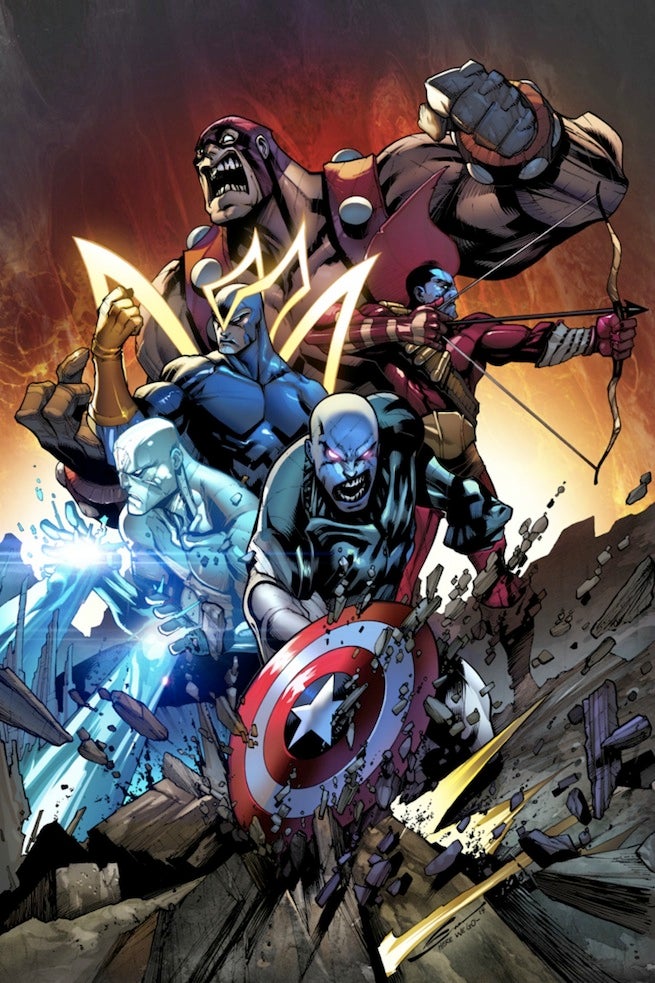
8. The Original Guardians of the Galaxy
Created by Arnold Drake and Gene Colan in 1969, the original Guardians of the Galaxy team did not feature talking raccoons, walking trees or sarcastic space pirates who call themselves “Star-Lord.” Instead, the alpha version of the GotG consisted of time-traveling astronauts, soldiers from Pluto and Jupiter, and a blue-skinned “noble savage” from the depths of Alpha Centauri B.
Major Vance Astro, Martinex T’Naga, Captain Charlie-27 and Yondu Udonta (with Starhawk and Nikki later joining) were active in the 31st century as part of an alternative time-line of the Marvel Universe (Earth-691 for those counting), protecting the Earth against an alien race known as the Badoon. They didn’t have their own book until the early 90s, and mostly appeared in series like Marvel Presents. They did play a significant part in one of the more popular and famous Avengers arcs, 1978’s “Korvac Saga.”
When Dan Abnett and Andy Lanning rebooted the GotG team in 2008 with Star-Lord, Rocket Racoon, Groot, Drax and Gamora (among others), the creators did end up paying homage to the original group as part of the book’s War of Kings tie-in story. Select member of the new Guardians are transported to the 31st century where they fight alongside the original crew.
Earlier this year, Marvel expanded its Guardians of the Galaxy comic book universe with this team when it launched Guardians 3000 with Abnett and Lanning at the helm.
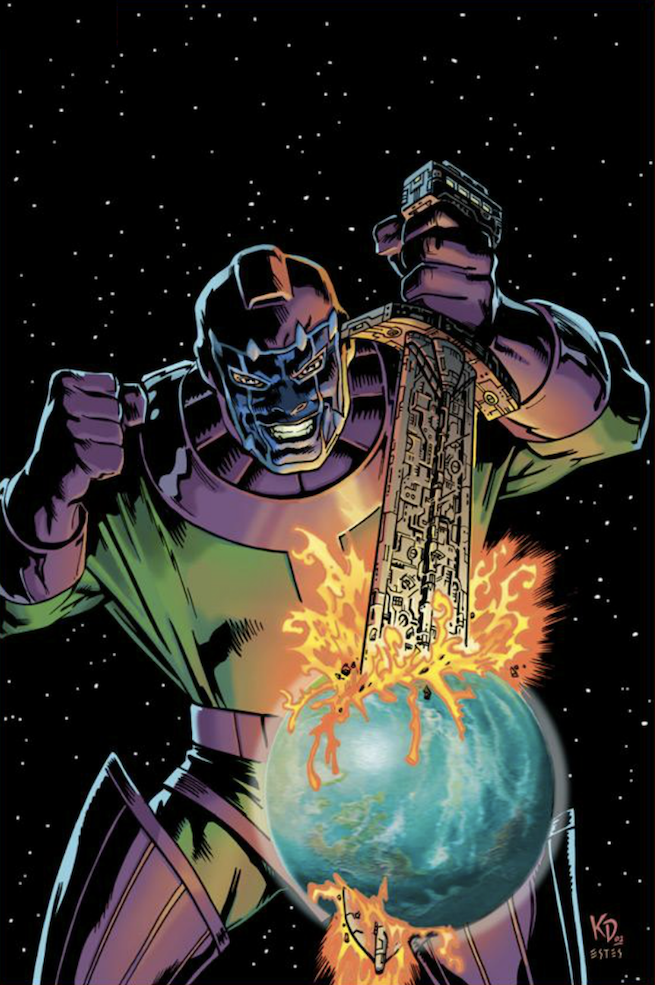
7. Kang
As a time traveling conqueror hellbent on world domination, Kang has journeyed to a number of different timelines and is equally lethal in all of them. However, the character is originally from the 30th century. Nathaniel Richards is a scholar who is fascinated with time travel and discovers technology created by Doctor Doom. He initially travels back in time to conquer ancient Egypt, but eventually finds himself in the present day when he first meets the Avengers in Avengers #8.
Kang would participate in a number of famous battles and wars over the years against foes such as the Avengers and the Fantastic Four, but his most famous and nefarious moment arguably came during the 2000-01 16-part “Kang Dynasty” storyline by Kurt Busiek, which ran in the pages of Avengers. In this story, Kang is the first Marvel supervillain to successfully take over the world – he did it without any cheating like mind control. Of course, he is eventually defeated by the Avengers, but even some of the industry’s greatest evil icons like Doctor Doom and Magneto were never able to take over the whole planet Earth. For that reason alone, Kang warrants prominent inclusion on this list.
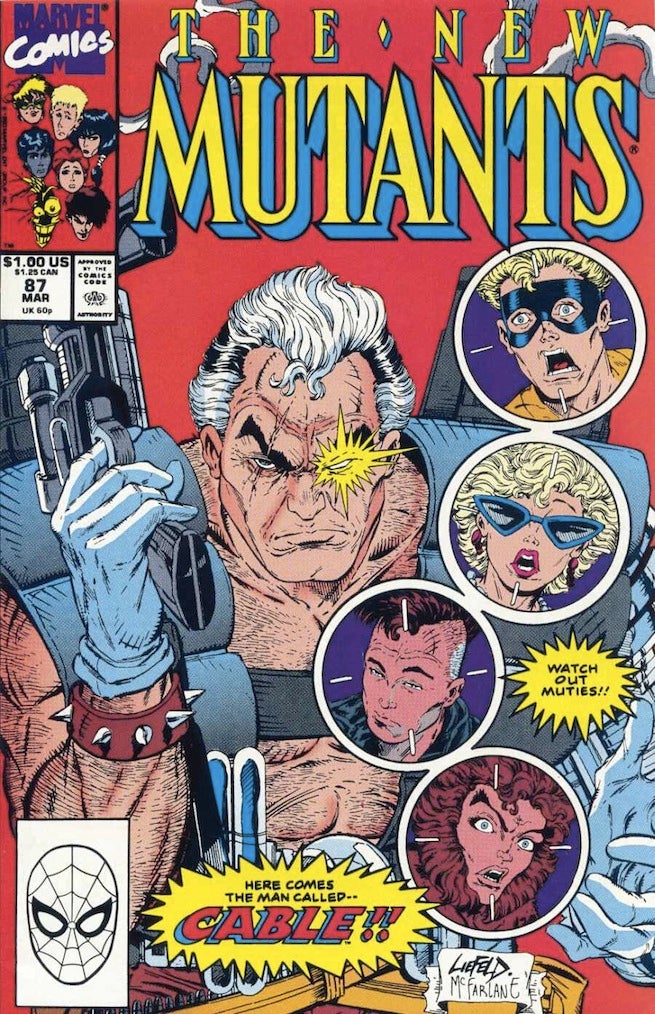
6. Cable
OK, so this is a bit of a tricky one when it comes to designating this character as being from the “future.” For the uninitiated, before this character became the mutant superhero Cable, he was Nathan Summers, the child of Scott Summers (Cyclops) and Madelyne Pryor. Nathan first appeared as a child in 1986 in Uncanny X-Men #201. About four years later, Rob Liefeld was tasked by Marvel editor Bob Harras to create a new character to lead the New Mutants team. Liefeld developed Cable as an anti-Charles Xavier – a more aggressive and physically proactive mutant.
Cable would lead the New Mutants which spun directly into the X-Force team. It was during the X-Force series that more details about his origins were revealed. Cable was in fact a future version of Nathan Summers, who would travel between timelines using his ship, the Graymalkin. In the present day, Cable is specifically fighting to prevent the rise of Apocalypse, but he’s also in conflict with the terrorist Stryfe Mutant Liberation Front.
Despite the somewhat incongruous biography, Cable has emerged as one of the most popular characters created in the 1990s, and has been the star of his own series and has co-headlined a book starring another Liefeld 90s creation, Deadpool. While the character has shockingly not made it to the big screen yet, he is rumored to be a part of the long-planned X-Force film.
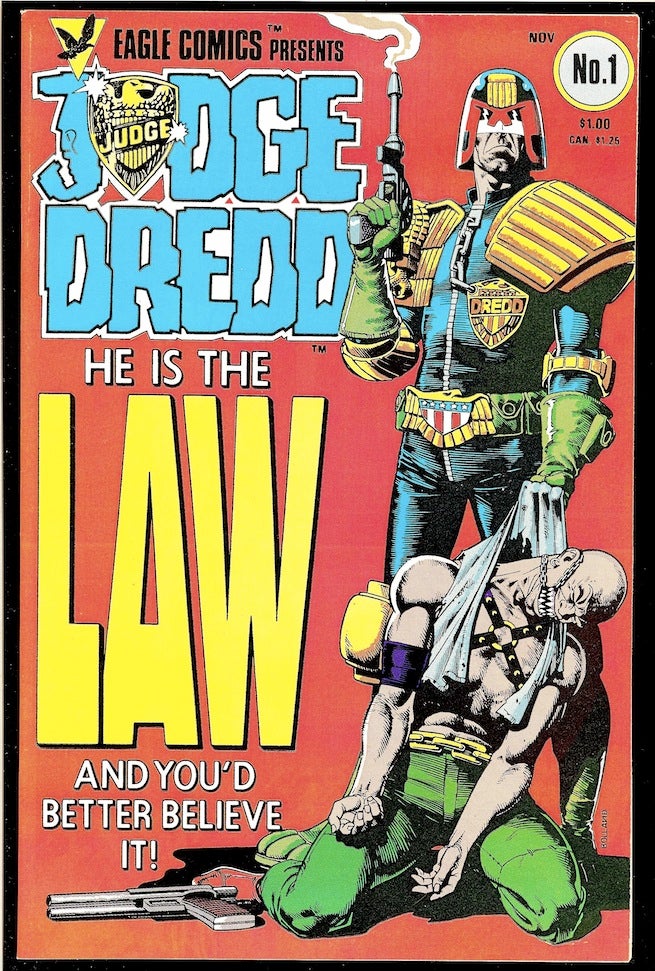
5. Judge Joseph Dredd
Dating back to his first appearance in 1977 in the second issue of British science fiction anthology 2000 AD, Judge Joseph Dredd has evolved into a global phenomenon. Dredd is a law enforcement officer in a violent dystopian city on “Cursed Earth” in the year 2099. Created by John Wagner, Carlos Ezquerra and Pat Mills, a number of other famous creators have tackled Dredd over the years, including Garth Ennis, Grant Morrison, Mark Millar and John Smith.
While Dredd is clearly more popular in the United Kingdom (British tabloids will make Judge Dredd references in stories that discuss authoritarianism, the police state or rule of law), he has been the focal point of two feature films (2012’s Dredd was better received than 1995’s Judge Dredd starring Sylvester Stallone) and countless video games, board games, collectible cards and novels. One of the more popular and well-known songs from the metal band Anthrax is all about Dredd and entitled “I Am the Law.” Even a 2011 episode of the sitcom 30 Rock, made a Judge Dredd reference.
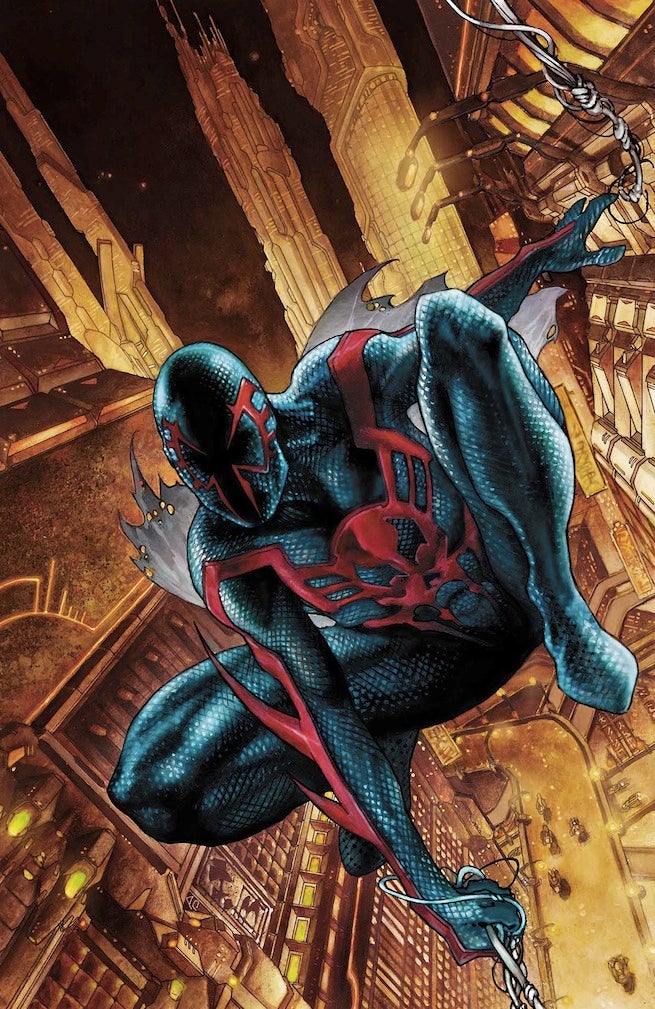
4. Miguel O’Hara
Back in the spotlight again as part of the current “Spider-Verse” event, Miguel O’Hara, aka, Spider-Man 2099, first debuted in the early 90s as part of new alternative universe of futuristic heroes Marvel created. In addition to Miguel, Punisher, X-Men and Doctor Doom, among others, all received the futuristic treatment, but unsurprisingly, Spider-Man 2099 was the most popular of these titles. With Peter David scripting and Rick Leonardi providing pencils, the series told the story of a new kind of Spider-Man. Miguel, an employee at an ethically questionable corporation called Alchemax, received his spider-powers when his DNA is altered in an experiment gone awry. While he does have a sense of responsibility like his predecessor, Peter Parker, O’Hara is also an edgier, darker version of Spider-Man.
Over the course of the 46-issue series, Miguel fought futuristic versions of such villains as Venom, Vulture and Green Goblin. There were love triangle and holographic assistants that looked like Marilyn Monroe. The series maintained its popularity until David reportedly left the book in a clash with Marvel’s editorial department. The book was cancelled soon after.
In July, Spider-Man 2099 was revived with David back at the helm. The first issue was one of the best-selling comics of the summer, proving that there’s still demand for a futuristic Spider-Man, even if O’Hara is currently operating in the present day.
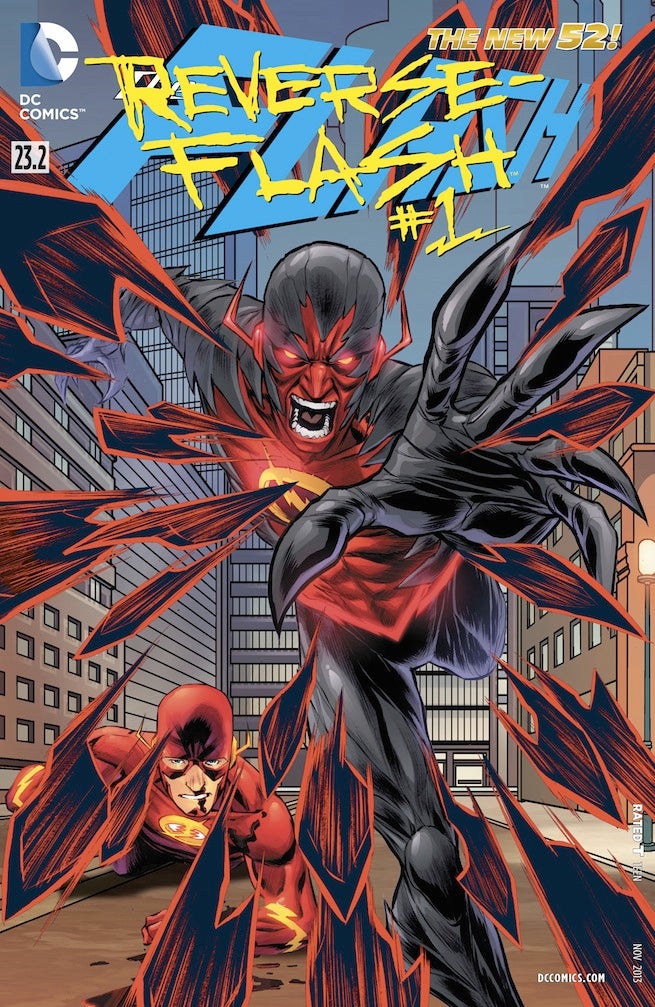
3. Professor Zoom
Since The Flash first premiered in October, one of the ongoing mysteries of the show has been who is the blur of yellow who killed Barry Allen’s mother? While it remains unconfirmed, Flash comic book fans have their suspicions – and suspect number one is Professor Zoom, also known as the Reverse-Flash, Barry Allen’s arch nemesis.
Zoom hails from the 25th century and finds a time capsule containing the Silver Age Flash’s costume. He uses a machine to amplify the suit’s speed energy, giving him the powers of the Flash. Naturally, he uses these abilities to commit crimes. After he is stopped by the Flash, Zoom develops an unhealthy fascination with the hero. In one famous storyline, he kills Allen’s wife, Iris, by vibrating his hand through her skull.
In the wake of Crisis on the Infinite Earths, Zoom’s character is revamped a bit to include an origin story where the villain undergoes a chemical bath similar to the one that gave Allen his powers. While Zoom starts as a huge Flash fan, he is eventually driven made by the fact that he learns, via time travel, that he is destined to become a villain.
Giving his prominence in the comics, Zoom is certain to eventually play a role in the Flash television series, but the show is being coy about who will actually be revealed as this villain from the future.
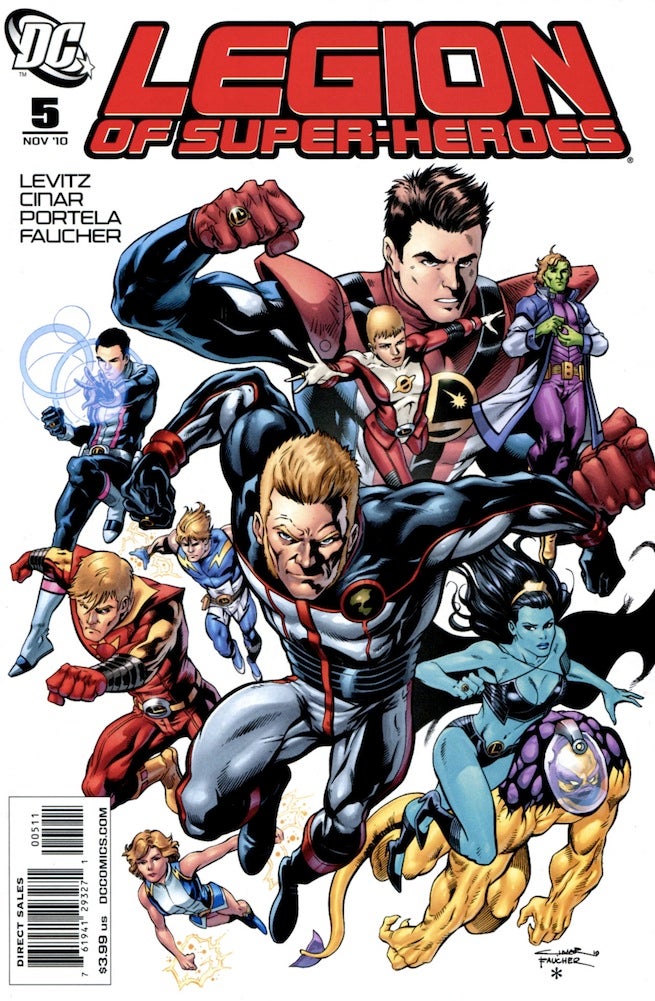
2. Legion of Super-Heroes
One of the first teenage superhero teams, the Legion of Super-Heroes were first introduced in Adventure Comics #247 (published in 1958) when three teens from the 30th century, Lighting Lad, Saturn Girl and Cosmic Boy, visited Superboy and told him about their “super-hero club.” Superboy is eventually inducted into the club and returns to the present day.
While it was originally intended as a one-off story, the Legion proved to be popular and continued to make appearances in Adventure Comics. In Adventure Comics #300, the team received their own regular feature billed “Superboy in Tales of the Legion of Super-Heroes.” After a few years, the Legion eventually supplanted Superboy as the designated star of the series.
The team has been a part of a number of fan favorite stories, none more iconic than 1982’s “Great Darkness Saga” by Paul Levitz, with art by Keith Giffen and Larry Mahlstedt. In addition with its legitimately shocking reveal involving the villain Darkseid, the storyline is also notable for starring almost every significant past and present (living) Legionnaire member.
A New 52 version of Legion of Super-Heroes was launched in 2011 and ran for 23 issues before it was cancelled last summer.
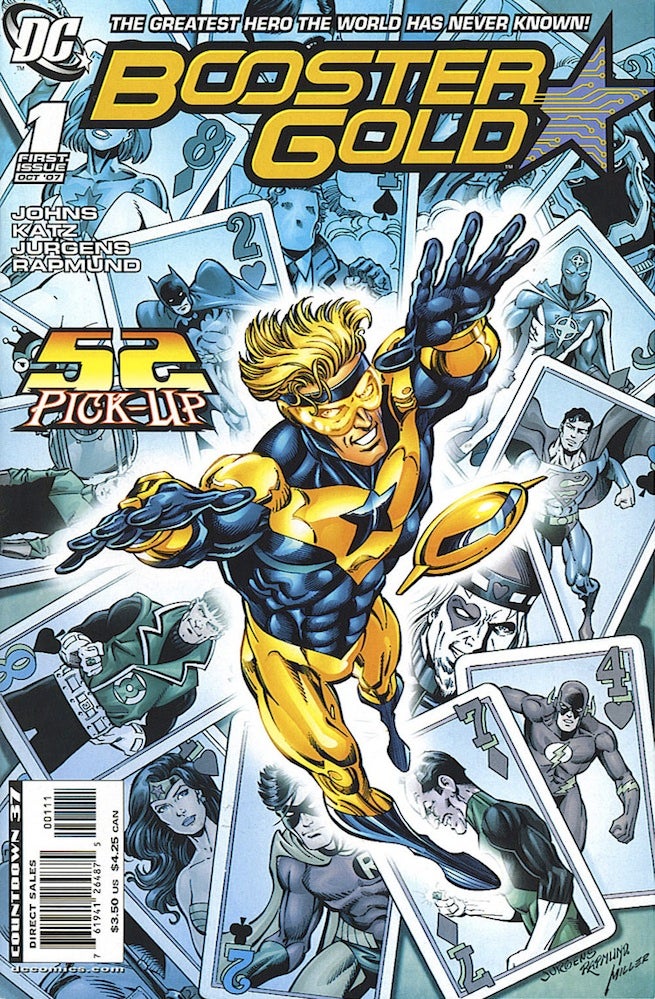
1. Booster Gold
Every character on this list (obviously) comes from the future, but Booster Gold, born Michael John Carter in the 25th century, is the only one who uses his knowledge of the future to be a glory-seeking braggart – part hero, part egomaniac.
As a result, Booster Gold earns the top spot on this list – in large part because he is ridiculously entertaining in any series he appears in. Originally created by Dan Jurgens following Crisis on the Infinite Earths, Booster first made a name for himself as part of the epically hilarious J.M. DeMatteis/Keith Giffen Justice League series. He continued to appear in other series, though arguably his most famous storyline took place within the weekly 52. In this story, Booster sees the absence of Superman, Batman and Wonder Woman as an opportunity to become the world’s most famous hero. Unfortunately, his robot sidekick Skeets, who feeds him information about past events, turns heel.
As part of the New 52 universe, Booster Gold led the Justice League International. However, he is eventually wiped from the present timeline and sent back to 19th century Gotham. Of course, Booster makes his big return in the pages of Justice League 3000 #12, which was released this month.






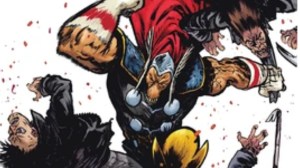

![Simu Liu Confirms The 2 Dream X-Men Shang-Chi Works With On Avengers: Doomsday [Exclusive]](https://comicbook.com/wp-content/uploads/sites/4/2025/12/Simu-Liu-Avengers-Doomsday-interview.jpg?w=300)